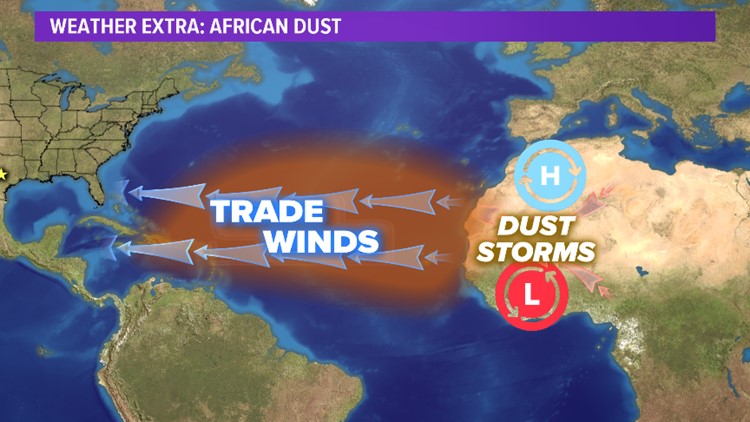This is the time of year when large plumes of dust churn up over the Sahara Desert in Africa and then crosses the Atlantic Ocean towards North America via the trade winds.
Below is a NASA satellite image of what the dust looks like from space.

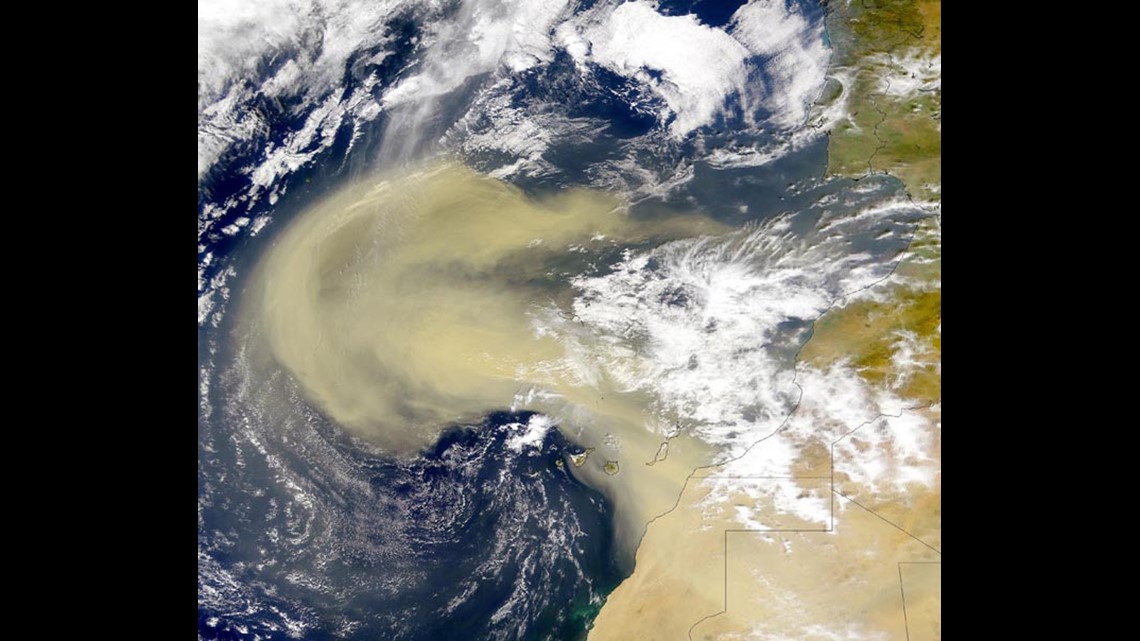
Wind Storms Over Africa

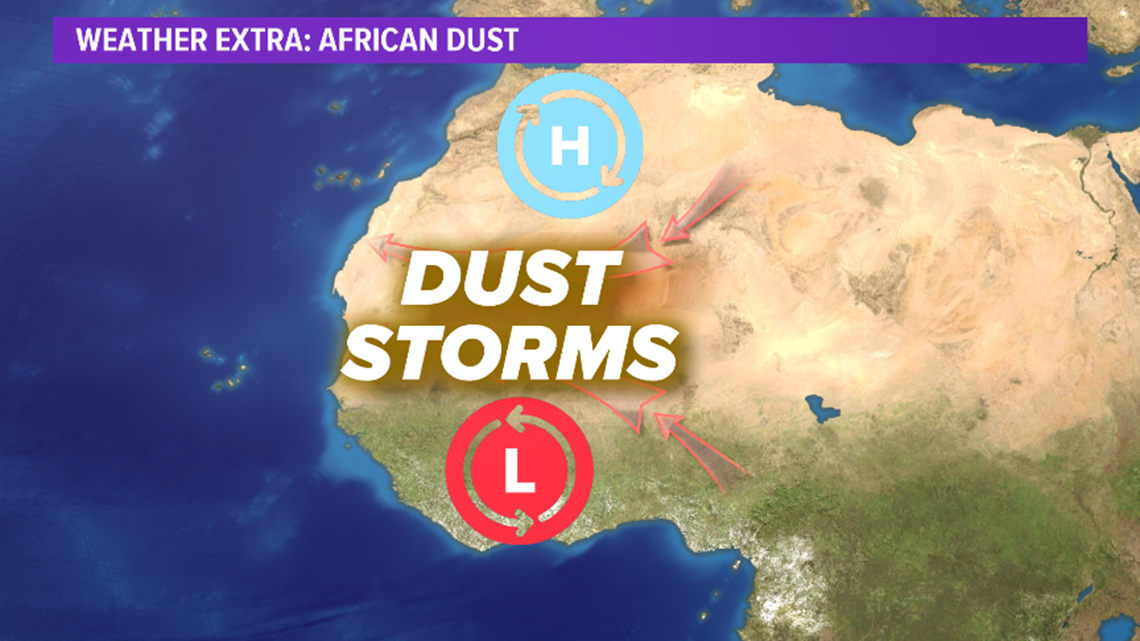
In order for this phenomenon to happen, big wind storms take shape over the desert.
A tight pressure gradient between high and low pressure helps to increase wind speed. In turn, this picks up any loose sand or dirt and throws it several thousand feet above the ground. Once the dust is elevated, then the trade winds take over.
Trade Winds Carry Dust

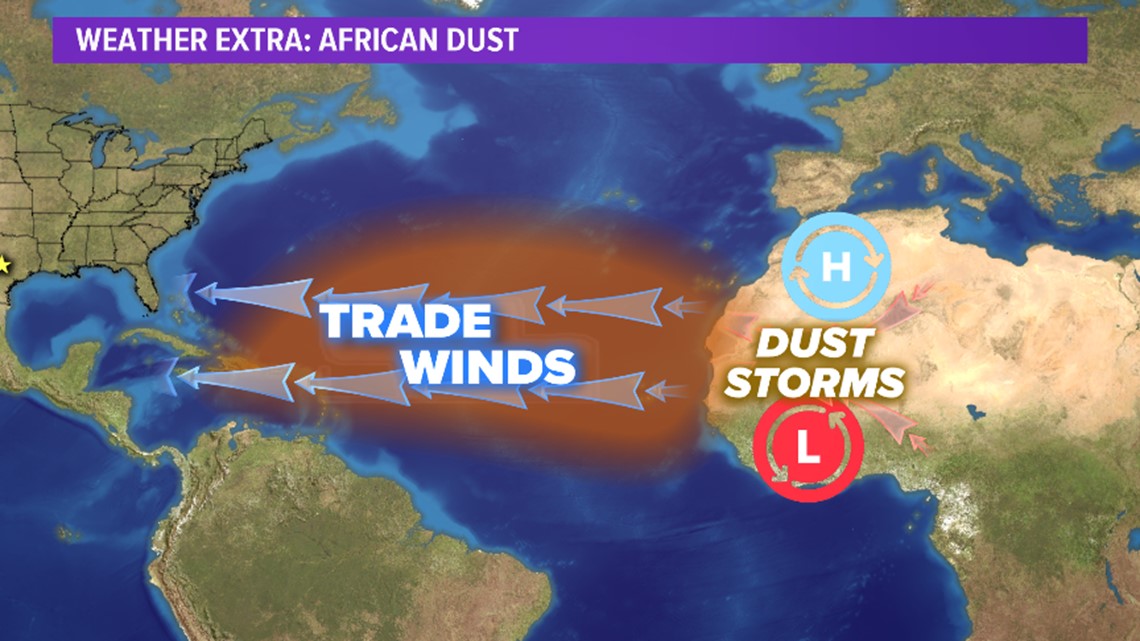
Trade winds over the Atlantic Ocean in the mid-levels of the atmosphere are consistently blowing from east to west. In other words, a steady conveyor belt of wind drives the dust all the way across the ocean to Texas. With so much dust over the Atlantic, it makes the air so dry that tropical activity typically shuts down. Tropical "cyclones" need a moist, warm and quiet environment at all levels to grow. If one ingredient is not present, like moisture, don't count on any new named storms.
Once the dust travels to the Lone Star State, you can expect the blue sky to turn hazy, along with reducing air quality.

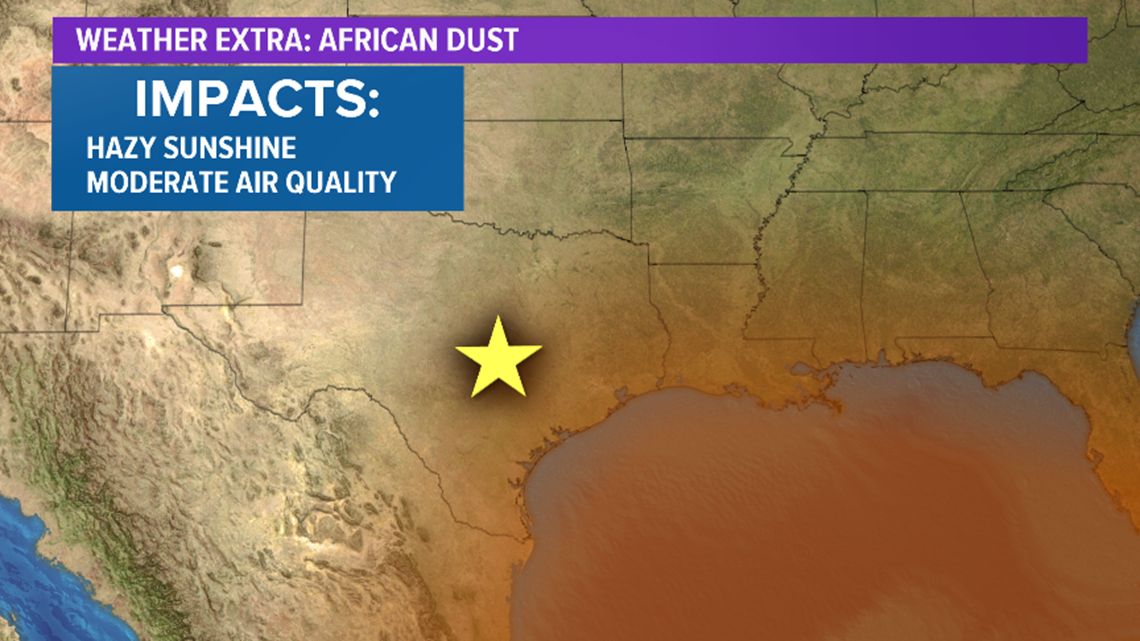
The KVUE Storm Team is the only weather team in the region that takes their own allergy counts on a daily bases. Using an air sampler that is located on the roof of our North Austin studios, we record a 24-hour sample of air and then analyze that data under a microscope.

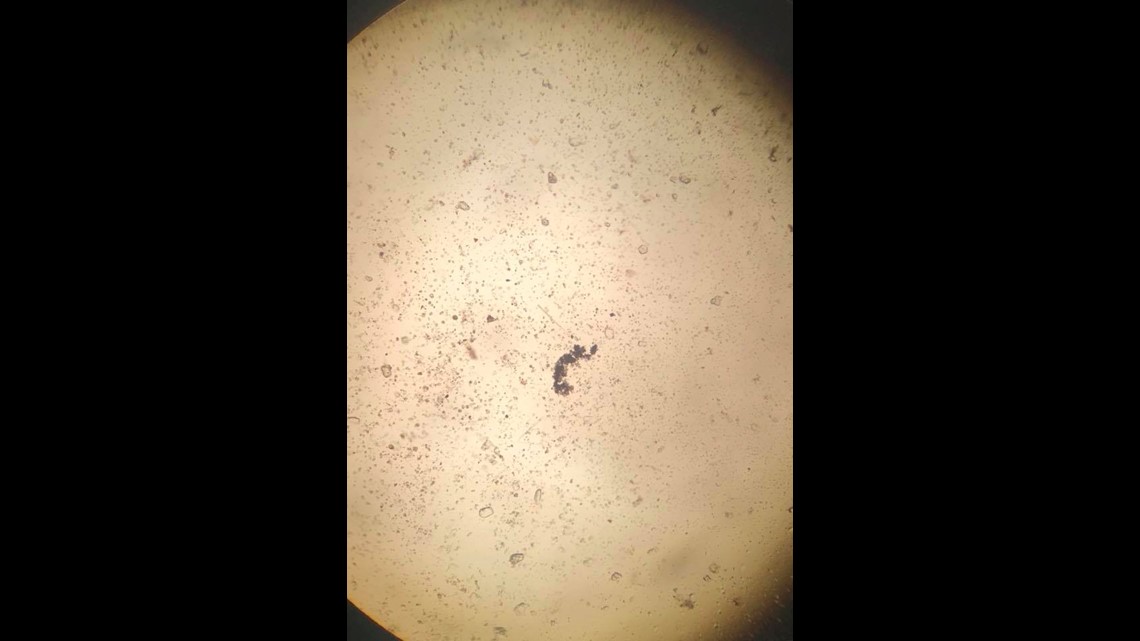
We often find pollen and mold, but when the African Dust arrives, we can see little specs of dust on our allergy slide.


One positive of the Saharan Dust? Sunrises and sunsets look spectacular.
Expect this pattern to occur several times this summer.
For the latest air quality forecast, click here.

